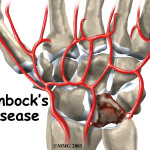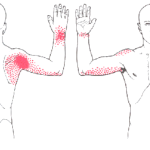The sports physiotherapist will frequently assess and diagnose acute knee injuries. In doing so, we will regularly rely on the results of special orthopaedic or clinical tests. However, if we are going to use these tests to make diagnoses and therefore guide our treatment decisions, it is vital that we are aware of the diagnostic accuracy of clinical tests. This article evaluates the research regarding the diagnostic accuracy of commonly used clinical tests for medial meniscus tears.
MEDIAL MENISCUS DIAGNOSTIC TESTS
Joint Line Tenderness
- Sensitivity: 63%
- Specificity: 77%
- +ve LR: 2.74
- -ve LR: 0.48
Reference: Hegedus et al (2007)
McMurray’s Test
- Sensitivity: 71%
- Specificity: 71%
- +ve LR: 2.49
- -ve LR: 0.41
Reference: Hegedus et al (2007)
Apley’s Grind Test
- Sensitivity: 61%
- Specificity: 70%
- +ve LR: 2.03
- -ve LR: 0.56
Reference: Hegedus et al (2007)
Thessaly Test at 20 Degrees Flexion
- Sensitivity: 89%
- Specificity: 97%
- +ve LR: 29.7
- -ve LR: 0.11
Reference: Karachalios et al (2005)
Magnetic Resonance Imaging (MRI)
- Sensitivity: 93%
- Specificity: 84%
- +ve LR: 5.81
- -ve LR: 0.08
Reference: Mackenzie et al (1996)
CLINICAL IMPLICATIONS
The clinical implications of these results are something that I’m sure many of us already knew – you cannot hang your hat on the results of any one test. Therefore, it is important to be acutely aware if you have an athlete who presents with knee pain and a positive McMurray’s you have only a small increase in the possibility of a meniscal injury. This is because of the identified diagnostic accuracy of the tests.
With regards to the results of these tests, I am sure that we are more accustomed to interpreting a positive result. Simply speaking a +ve LR of 2 – 5 represents a small change in the probability that a condition exists given a positive results. A PLR of 5 – 10 indicates a moderate shift and > 10 indicates a large shift. Therefore, the higher the PLR the more clinically useful or indicative a positive result becomes (Jaeshke et al 1994).
This might seem disheartening to the clinicians amongst us who wish to diagnose all knee pathologies. However, you must remember that to improve your diagnostic accuracy (and continually increase the ‘post-test’ odds) you should utilise a combination of tests. A number of positive results will greatly increase your clinical suspicion of a medial meniscus tear. Also, remember, obtaining negative results to rule out the lead competing hypotheses will improve your clinical reasoning and diagnostic accuracy.
That is just one of the most awesome part of sports physiotherapy – high level analytical thinking and clinical reasoning!
If this is your jam (like it is mine) check out this awesome reference text check out: Orthopaedic Clinical Examination: An Evidence Based Approach for Physical Therapists (Netter Clinical Science)
What are your thoughts when diagnosing medial meniscus tears? Be sure to let me know in the comments or catch me on Facebook or Twitter
If you require any sports physiotherapy products be sure check out PhysioSupplies (AUS) or MedEx Supply (Worldwide)
REFERENCES
Hegedus EJ, Cook C, Hasselblad V, Goode A, McCrory DC. (2007) Physical Examination Tests for Assessing a Torn Meniscus in the Knee: A Systematic Review With Meta-analysis. Journal of Orthopaedic & Sports Physical Therapy 37(9).
Jaeschke, R., Guyatt, G., & Sackett, D. L. (1994). Users’ guides to the medical literature. III. How to use an article about a diagnostic test. A. Are the results of the study valid? Evidence-based medicine working group. JAMA: The Journal of the American Medical Association, 271(5), 389–391.
Karachalios T, Hantes M, Zibis AH, Zachos V, Karantanas AH, Malizos KN. (2005) Diagnostic Accuracy of a New Clinical Test (the Thessaly Test) for Early Detection of Meniscal Tears. The Journal Of Bone & Joint Surgery 87(5)
Mackenzie R, Palmer CR, Lomas DJ, Dixon AK. (1996) Magnetic resonance imaging of the knee: diagnostic performance studies. Clin Radiol. 51:251-7
Related Posts
Comments










good
WONDERFUL Post.thanks for share..extra wait .. …
Thanks for the excellent post. One clinical scenario that I often debate is decisions on whether imaging is required after an acute injury, especially when potential costings is a factor for the player.
Can it be inferred that a positive joint line tenderness within your test battery suggests a more peripheral (red zone) tear, and therefore a conservative approach to the rehab can be initiated, without worrying about the scan and still achieving good results? Or are we just wasting time with a conservative approach when surgical repair or partial menisectomy is probably needed? Or would you consider the rate of improvement in the first few days post injury as an indicator of the management style required?
I appreciate any thoughts.
Cheers.